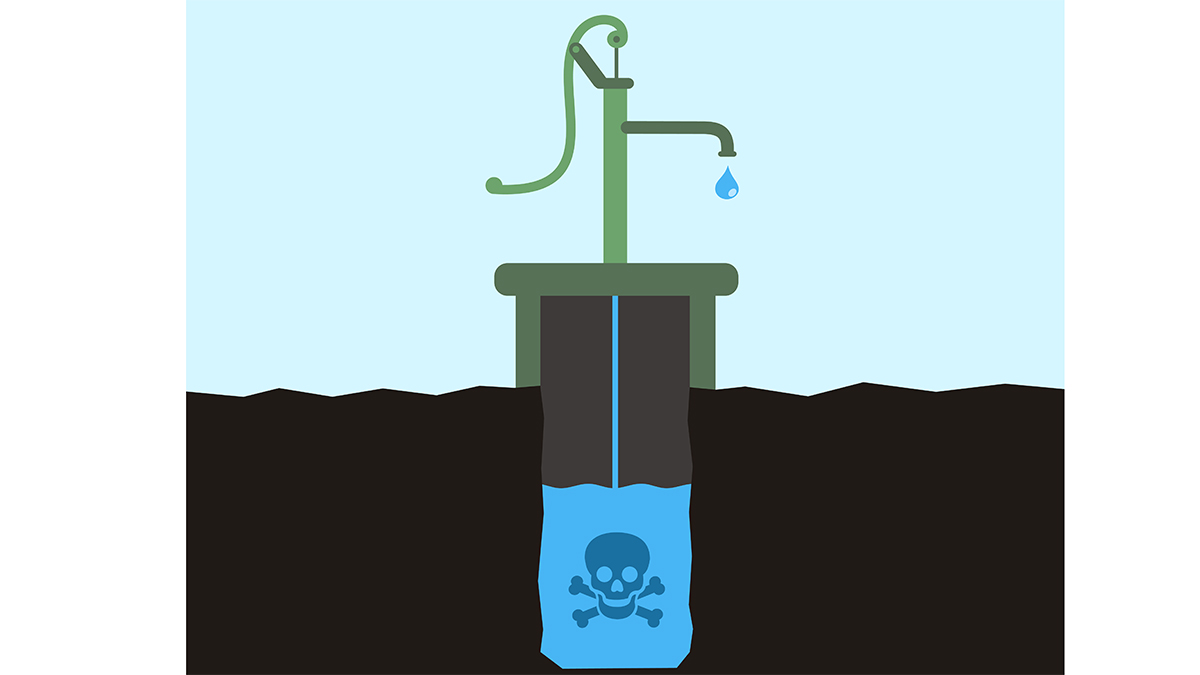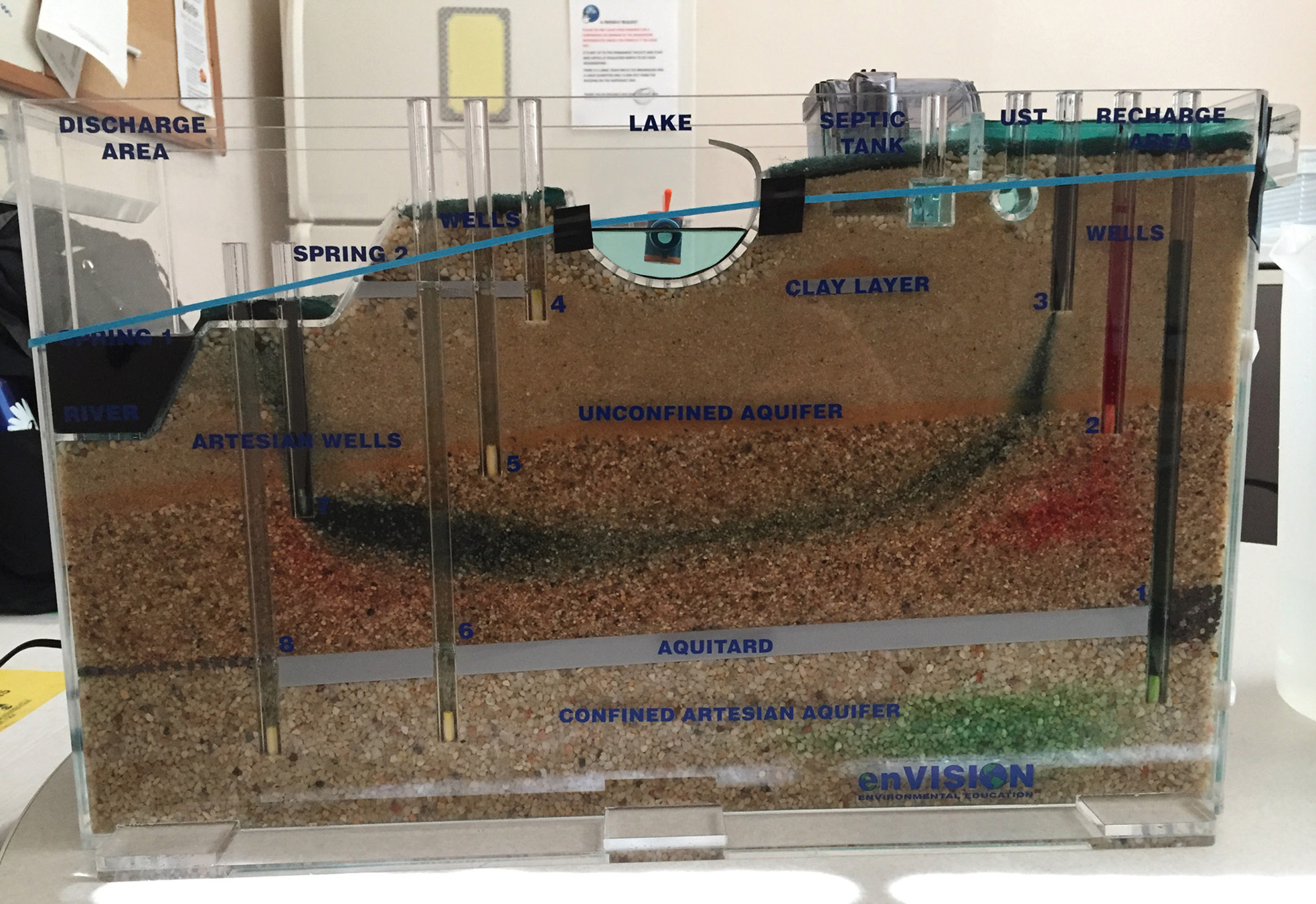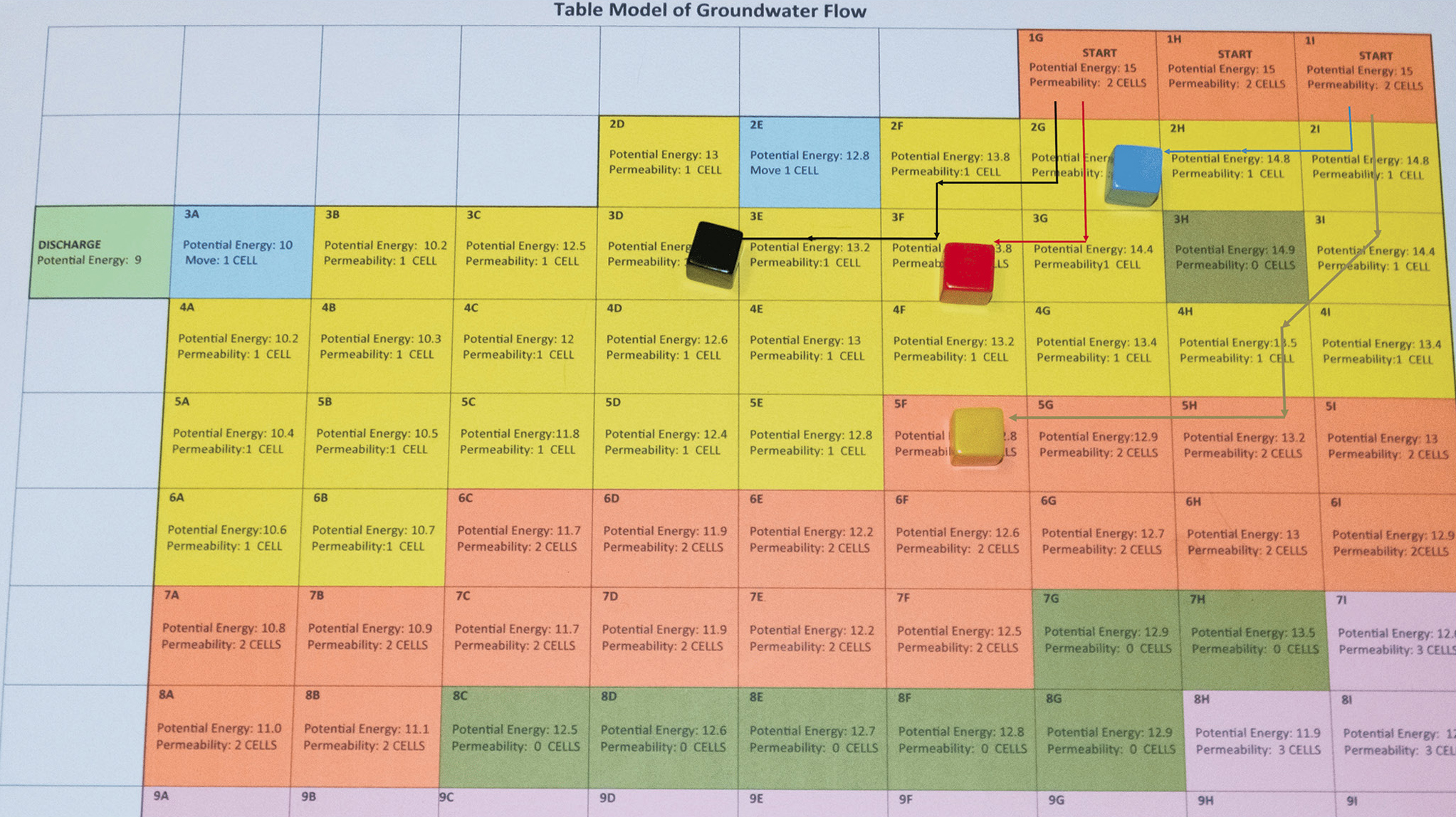feature
Unplugged to Plugged In
The Science Teacher—January/February 2022 (Volume 89, Issue 3)
By Kristin L. Gunckel, Beth A. Covitt, Garrett Love, Judith A. Cooper-Wagoner, and Dan Moreno

Computers and computer algorithms have contributed to important scientific advances by allowing scientists and engineers to create and use sophisticated models to explain and predict phenomena. Yet, of the eight Next Generation Science Standards (NGSS) science and engineering practices, computational thinking may be the least familiar to teachers and students. In the Framework for K–12 Science Education (NRC 2012) computational thinking is linked with mathematics as tools for representing variables and relationships. But what exactly computational thinking means for learning and teaching is not always clear. Does engaging in computational thinking mean students should use spreadsheet software and other computer tools to manage data? Is having students use online simulations to visualize phenomena computational thinking? Should students be writing code and building computational models? Computational thinking can mean all of these things and more. In this article we unpack computational thinking practices by presenting a sequence of instructional activities focusing on groundwater contamination. Our instructional approach does not require coding but does support students in engaging in the computational thinking necessary to use models to understand problems that are relevant to their lives and communities.
What is computational thinking?
Computational thinking is an analytical approach to understanding and solving problems that is deeply intertwined with modeling systems (Wilensky and Reisman 2006; Wofford 2009). Both modeling and computational thinking rely on abstraction by focusing on the essential elements of a system and hiding other aspects to deal with complexity (Wing 2014). For example, a familiar situation that unfortunately affects many communities is contamination of local aquifers used for drinking water. Determining where the contamination originated and predicting its spread requires creating models of the groundwater system. These models abstract important elements of the system (such as the porosity and permeability of the aquifer or the elevation of the water table) and generate representations of the contamination plume (such as maps and geologic cross sections). Scientists, engineers, and residents of the affected community need to feel confident in the accuracy of these representations to develop solutions and hold responsible officials accountable for cleanup. Table 1 (see Online Connections) shows some computational thinking practices involved in creating, using, and evaluating models of contaminated groundwater systems.
How can we teach it?
Reflective of the view that computational thinking is intertwined with modeling, instruction that engages students in computational thinking (science and engineering practice) also intertwines understanding of systems and system models (crosscutting concept) and relevant disciplinary core ideas. However, computational thinking practices such as discretization and parameterization are removed from students’ typical everyday experiences with models or computers. Engaging students in abstraction of unfamiliar systems, such as groundwater, can be challenging as well. In modeling groundwater contamination, where aquifer systems are hidden from view and have both small-scale (e.g., size of sediment pore spaces) and landscape-scale dimensions, understanding what is being modeled can be difficult for students to grasp.
Our approach to support students in engaging in these challenging ideas and practices is to organize instructional activities in a sequence that moves from concrete to more abstract. Activities on the concrete end of the spectrum engage students with more physical and familiar representations of systems, such as water permeating through sand and gravel. At the abstract end of the spectrum, activities replace observation of physical attributes with abstractions. For example, observations of permeability are replaced with a parameter value for hydraulic conductivity. We start with activities that do not require a computer (“unplugged” activities) and move to activities performed in the computerized environment (“plugged-in” activities). In a sequence, plugged-in activities require students to apply to computerized models what they learned from the unplugged activities about systems and computational thinking.
What does it look like?
Comp Hydro: Using Computational Thinking and Models to Investigate Groundwater Contamination in Tucson, AZ (Gunckel et al. 2019) is a three-week instructional unit that teaches computational thinking using models of a groundwater system contaminated by trichloroethylene and 1,4 Dioxane. In the 1950s these degreasing solvents were used to clean military airplanes at an airport in Tucson, Arizona, and were routinely dumped on open desert ground. Decades later, these harmful chemicals were discovered in the drinking water of nearby residents. Similar examples to this situation are found globally. During instruction, students learn how the groundwater became contaminated and how it might be remediated by interacting with three different but related models of the Tucson groundwater system.
Unplugged and concrete: groundwater tank model
The instructional sequence begins by presenting students with a video of a local resident describing the effects of groundwater contamination on the community and a newspaper article that presents maps of contaminated wells. Students are encouraged to ask questions about the situation. Typically, students wonder where the contamination came from and how the contamination might get cleaned up. The following computational thinking activities are designed to assist them in answering these questions.
To provide students with a concrete experience visualizing the movement of a contamination plume through a groundwater system, students engage in an unplugged activity using a groundwater tank model (Figure 1). The tank model shows a cross-sectional view of a simple system that includes layers of sand, gravel, and clay, and several wells. Water is introduced via a recirculating pump and students observe the infiltration of water through the sediment layers, noting the saturated and unsaturated zones. Dye representing contamination is added at a source location, and students can predict and test the pathway that it will follow through the system. Attaching a syringe to the wells to simulate pumping, the teacher guides students in recognizing that the water and contamination move from high potential energy to low potential energy as the dye travels down through the system due to gravity and then is pumped up through wells. The students recognize the tank as a model of a complex system and use it to work out the principles that explain how water and contamination move in response to differences in potential energy and permeability.

Unplugged physical model of the groundwater flow tank.
Attention to student talk and writing about their observations of the groundwater tank model can provide teachers with formative assessment information on:
- What sense students make of the relationship between rate of flow of the water (and contaminants mixed with water) and the permeability of the sediments in the tank.
- How students understand the relationship between potential energy and the direction of water flow.
- What connections students recognize between the groundwater tank model and a real-world groundwater system or problem.
Still unplugged but more abstract: Analog groundwater models
Although the groundwater tank system is helpful for visualizing the phenomenon, students quickly identify its drawbacks as a tool for modeling the local contamination situation. They realize that the physical tank model has limitations in terms of functionality and practicality and that a computerized model would be more useful for explaining the groundwater contamination from the airport, predicting future movements, and designing and testing remediation options.
To transition to computerized models, another unplugged—but more abstract—model is introduced. This model is a cross-section representation of the groundwater tank model drawn on a piece of paper, with various sediment layers represented by different colors. In a precursor to engaging in calculus, students learn that potential energy is different at any given point in the system and that the best way to deal with a continuously changing variable is to discretize the cross-section by overlaying a grid and then assigning values for potential energy and permeability to each cell in the grid based on the characteristics of the system. In a computer model, the values for each cell would be computed, based on data from the wells; in this analog version, cells are parameterized based on their location within the grid. Working with different size grids, students figure out that it is easier to assign the parameters for permeability with smaller-size cells because smaller-size cells may have fewer ambiguous overlaps with boundaries between sediment layers. However, using more cells also requires more work to parameterize, a fundamental trade-off in computational modeling.
Once the cells are parameterized, the students use the cross section as an analog model to trace water contamination. Students select a marker and place it on the grid at the location of the airport, where the contamination started (Figure 2). The teacher calls out a signal to move and each student moves their marker to an adjacent cell, following the rule that groundwater moves from high potential energy to low potential energy. The permeability parameter indicates how many cells a student may move in that turn. A student moves their marker three cells if their marker is in the gravel layer (higher permeability) but only one cell if their marker is in a fine sand layer (lower permeability). The teacher calls out another turn, or iteration, and students keep track of the pathways their marker followed through the system and how many iterations were required to complete their pathway. Students then compare and contrast their pathways to the pathways they observed in the groundwater tank model and construct arguments for how and why their pathways are similar to or different from what they observed in the physical model. This activity serves as the crucial connector between the concrete groundwater tank model and the abstract computational models of groundwater systems with which they interact in the next activity. Formative assessment for this activity can focus on:

Student markers and pathway through unplugged analog cross-section model.
Note discrete, parameterized cells (potential energy and permeability). Colors represent different types of Earth materials (e.g., yellow is sand, orange is gravel, brown is clay).
Plugged-in and abstract: NetLogo models of the groundwater contamination
Having experienced how computational thinking practices such as discretization, parameterization, and iteration are used to create and use models, students work in groups to apply these practices in the plugged-in computerized environment using a NetLogo model of the local groundwater contamination situation (Figure 3). NetLogo is an agent-based modeling platform designed for educational contexts (Wilensky and Reisman 2006). In this instructional unit, the students do not code the model, but they do use various computational tools to interpolate and assign potential energy and permeability parameters to the discretized cells in the model. They then introduce a contamination source and run the model to see the pathway the contamination takes through the system. Prompts within the model ask students to use what they know about discretization, parameterization, and rules to describe how the model produced this pathway. These prompts also structure the group work to hold all students accountable for participation and encourage group members to agree on how they will use the model. As an approach to validating the models, students are encouraged to compare what they see in the NetLogo model to what they observed in the groundwater tank model to look for agreement and explain potential differences.

Plugged-in NetLogo computational model of groundwater flow system.
The red tic marks trace the contamination from the airport, located in the upper right corner through the aquifer.
To learn how models can be useful for prediction, students use the NetLogo model to develop groundwater remediation plans by inserting wells into the system to test various pump-and-treat cleanup scenarios. Groups of students present their remediation models to each other, evaluating potential affordances and constraints of the options they constructed, as well as the advantages and limitations of the computational models they used to create their cleanup scenarios. On the final day of instruction, students compare their cleanup scenarios with the scenario that the local utility uses to address the contamination and ensure safe water supplies to residents.
Foci for formative assessment during this activity can attend to:
- How students use the computational model to explain and predict the flow of water through the system and develop a plan for remediation.
- How students use computational thinking practices to make sense of how computational models are used to model groundwater flow.
- How students use computational thinking practices to critique strengths and weaknesses of the model.
Conclusion
Our approach to teaching computational thinking scaffolds students in developing understanding of discretization, parameterization, interpolation, iteration, and using rules to model systems without engaging in coding, at least initially. Teaching computational thinking using a sequence of concrete to abstract and unplugged to plugged-in instructional activities supports students in dealing with the abstractions inherent in modeling and computational thinking. Furthermore, the inclusion of multiple ways of engaging with groundwater phenomena (e.g., physical models, maps, cross sections, computer models), repeated opportunities to build connected understandings of groundwater flow, and structured group work supports students with various learning strengths in developing their computational thinking. These computational thinking practices will then become useful tools when students are faced with using models to understand and respond to real and common situations, such as groundwater contamination, in their local communities. ■
Safety considerations
Although the dye used in the groundwater tank model is non-toxic, as a best practice, teachers should consider wearing goggles or safety glasses as well as non-latex gloves when using the dye.
Online Connections
Comp Hydro curriculum materials: http://ibis.colostate.edu/comphydro/Module
Connecting to the Next Generation Science Standards: https://www.nsta.org/sites/default/files/journal-articles/TST89-3/Gunckel/NGSS_Alignment_Table_R1.docx
Net Logo models: http://ibis-live1.nrel.colostate.edu/CompHydro/Index.php
Table 1. Computational Thinking Practices: https://www.nsta.org/sites/default/files/journal-articles/TST89-3/Gunckel/Table_1_R1.pdf
Kristin Gunckel (kgunckel@email.arizona.edu) is a professor of science education at the University of Arizona, Tucson, AZ; Beth A. Covitt is Head of Science Education Research and Evaluation at the spectrUM Discovery Area at the University of Montana—Missoula, Missoula, MT; Garrett Love is an instructor of engineering at the North Carolina School of Science and Mathematics, Durham, NC; Judith A. Cooper-Wagoner is a lecturer in science education at the University of Arizona, Tucson, AZ, and Dan Moreno is a graduate research assistant at the University of Arizona, Tucson, AZ.
Earth & Space Science Environmental Science Science and Engineering Practices High School


